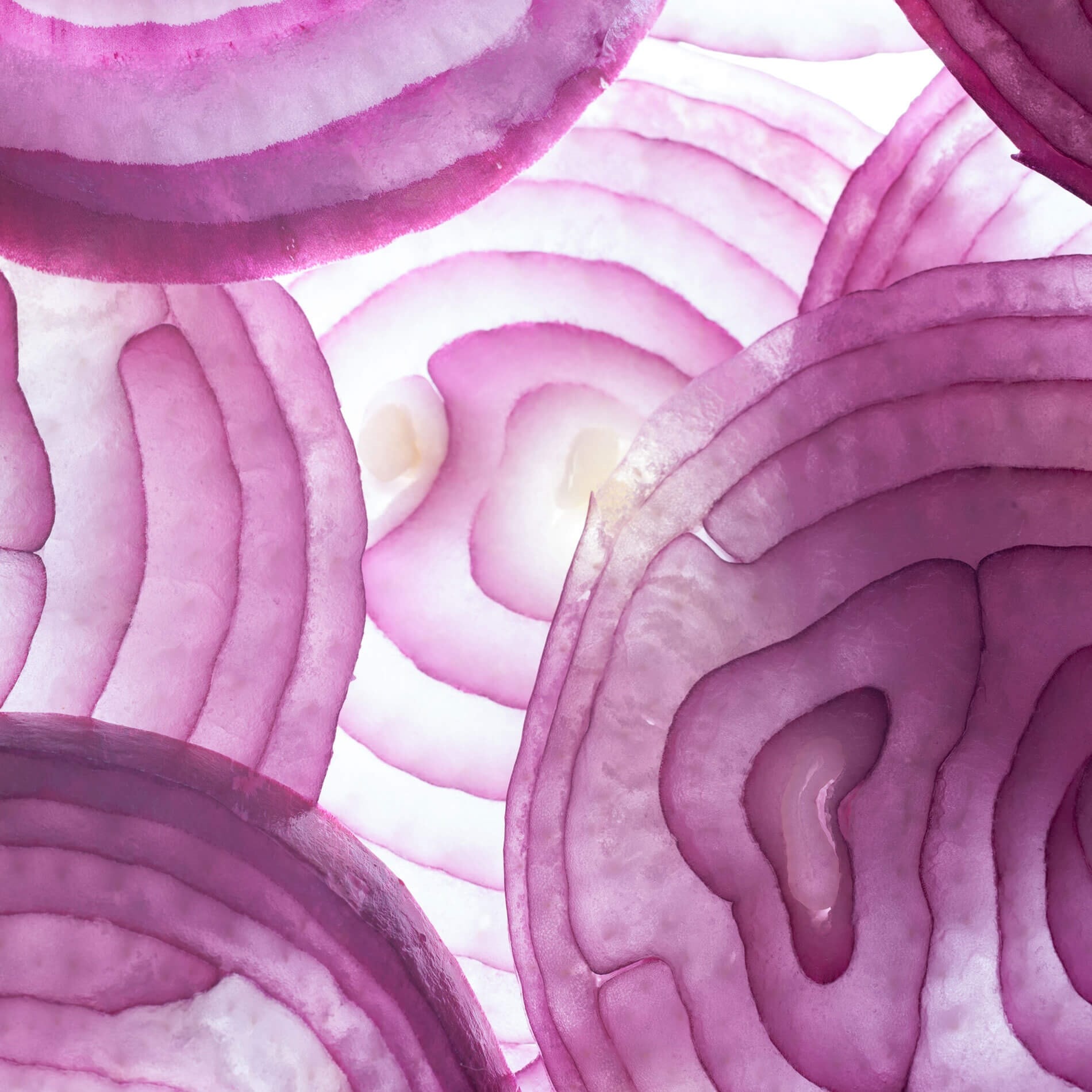Does FOS feed bad bacteria?
Recently a very interesting research paper was published, which summarised an expert panel discussion held at the International Scientific Association for Probiotics and Prebiotics (ISAPP) Annual Meeting in May 20151. In this article, we consolidate their conclusions, as well as touch on the wider debate of whether prebiotics increase 'bad' as well as 'good' bacteria in the gut.
The ISAPP discussion centred on the definition of a prebiotic. As is common in any field of work, as time progresses and new knowledge emerges, definitions evolve. This discussion is a nice example of this. It describes how the term ‘prebiotic’ in relation to the gut microbiome was coined twenty years ago and since then various organisations have put forward their stance on what a prebiotic actually is. These definitions have included referring to prebiotics as non-digestible carbohydrates, which initiate changes in the composition of the gut microflora, and selectively feed friendly bacteria. In most cases prebiotics are thought to have a positive overall impact on gut health. Fructooligosaccharides (FOS) are a type of prebiotic, and generally the most commonly found type of prebiotic in supplements in the UK and Ireland.
- What was the aim of the discussion?
- Balance is key
- A wider look at the research
- Why does bad bacteria decrease as a result of prebiotics?
- Summary
What was the aim of the discussion?
The paper does not aim to correct any of these definitions with a final and conclusive new definition of a prebiotic. Instead, it points out that with recent advances in research bringing better techniques for scientists to identify and measure microorganisms, we can now see more comprehensively the changes that take place in the gut microflora, when prebiotics are consumed.
It’s suggested that by looking at the research we widen our scope in terms of what a prebiotic is as an ingredient - many more complex carbohydrates used in the food industry are now being shown to have possible prebiotic effects. The effects prebiotics have on the gut microbiome, and the way in which prebiotics actually work, are becoming much wider topics of discussion and debate.
Over the years, we have encountered the question of "Do Fructooligosaccharides (FOS) feed pathogens?". When we use the well accepted and most widely used definition of a prebiotic, (that they selectively supports the growth of friendly bacteria), then by definition, the answer to the question is 'no'. Using this definition prebiotics will not feed bad bacteria. However, in light of this publication, we are having to take a fresh look at this definition, and how this might change the way we respond to the question.
Balance is key
First of all let’s recap that a ‘healthy gut microbiome’ is generally considered to be one which consists of a highly diverse array of bacterial species and strains, with a high ratio of friendly bacteria over pathogenic bacteria. So in a healthy gut there will be some pathogens (bad bacteria), but providing the levels of friendly bacteria outweigh them, this should not compromise good health - in fact this is considered optimal. Balance is the key.
Let’s now look at the negative stories which have circulated in the industry surrounding prebiotics. Generally these reports tend to be along the lines of ‘FOS feeds pathogens’ with not much further explanation of how this statement is backed up by research, or what it could mean in the context of health. It is tempting to assume this must be a 'bad' thing, and unfortunately this haste has led some to turn against FOS.
The origin and interpretation of these statements is unclear, but from what we understand, there are some blog posts online which caution against prebiotics for the reason that they feed the growth of pathogens. One such website – Breaking the Vicious Cycle - claims:
‘Recent studies have shown that Inulin/FOS encourages the growth of Klebsiella, a bacterium implicated in Ankylosing Spondylitis and increased intestinal permeability.’
This sentence is not referenced in the text but there is a list of references at the end of the article. Interestingly, most of the references link through to publications describing the positive effects of prebiotics on the gut microflora and health. There is one reference however for a publication published in 2000 in Russian, and at present we only have access to the abstract2. The abstract describes an in-vitro study looking at how inulin influenced the activities of various pathogenic bacteria including Salmonella, E. coli and Klebsiella. Whereas the activity of Salmonella and E. coli was restricted by the inulin, it appeared to increase for the Klebsiella. A search for other studies investigating the effect of inulin and other prebiotics on pathogens including those in the Enterobacteriaceae family such as Klebsiella, shows that some Enterobacteriaceae including Klebsiella do indeed appear to use prebiotics as a food source to grow3 (NB: This reference is also noted on Wikipedia ‘Fructooligosaccharide’).
However, we must be careful not to jump to conclusions that this is a ‘bad’ thing, or at least not for most individuals in a normal state of health. We started off by recapping the mantra by which many things in life, including the gut microflora, have in common: balance is the key.
A wider look at the research
Actually, a comprehensive look at the research available shows that although prebiotics may feed some ‘pathogens’, this is greatly outweighed by the rate at which they feed friendly bacteria. For example, a study conducted last year took faecal samples from healthy human volunteers, extracted the microbial content, and then analysed how these samples reacted when inulin was added (a negative control and a positive control, cellulose, were also added to separate samples)4. The results demonstrate that inulin caused the Lactobacilli and Bifidobacterium to flourish, and also caused a slight increase in Enterobacteriaceae, the family to which Klebsiella belongs.
However, in the same way that when we look at cholesterol and heart health, we do not fixate on the Total Cholesterol (TC) reading only, but rather view it in the context of the LDL (‘bad’ cholesterol) and HDL (‘good’ cholesterol) - because it gives us a much more accurate picture of what is going on physiologically in the body and the symptoms the individual may experience, as well as predicting the risks they are at* – it is good practise to apply this logic in this situation also.
That is why the authors of this paper analysed the ratio of the Lactobacilli and Bifidobacteria to the Enterobacteria, to give us a better idea of the balance between them. What their results show confirms that we need not be worried about a slight increase in Enterobacteria. This is because their results showed that for every 10 Enterobacteria in a negative control group (no prebiotic) there were 18 Lactobacilli (to 1 decimal place). But when inulin prebiotic was added this jumped to 30 Lactobacilli per 10 Enterobacteria, a 3 to 1 ratio, which is a much healthier balance than without the prebiotic.
Similarly, for the Bifidobacteria: in the negative control group (no prebiotic), for every 10 Enterobacteria there were 17 Bifidobacteria but when the inulin is added this jumped to 45 Bifidobacteria per 10 Enterobacteria, a 4.5 to 1 ratio, which is again a much healthier ratio. It should be said that this study was carried out in-vitro, and, as always, it’s best to have results confirmed in human clinical trials, but it is extremely illustrative of the argument of balance. The inulin increased the ratio of 'good':'bad' bacteria.
Over the years numerous studies have confirmed that prebiotics seem to have the predominant effect of increasing levels of friendly bacteria in the gut, particularly Bifidobacteria5,6,7. We do not yet know the exact rate of change of different genus and species in the gut when different types and amounts of prebiotics are taken. However, the overall consistent outcome from the clinical trials is that prebiotics have a positive impact on the gut microflora. We definitely do not see from the clinical research that levels of pathogens flourish to an unhealthy level, actually in most cases the overall pathogen load decreases.
Why does bad bacteria decrease as a result of prebiotics?
There are a number of theories as to why the pathogen load in the gut decreases as a result of prebiotic supplementation. The main theories are:
- That as friendly bacteria such as Bifidobacteria feed on the prebiotic, acids are produced which lowers the pH in the gut, making it less favourable for the growth of pathogens;
- That friendly bacteria produce antibacterial substances to 'ward off' the growth of pathogens in their vicinities; and
- That friendly bacteria simply 'out-compete' pathogens in the gut; attaching to the intestinal wall & pushing them out / leaving them less space physically to multiply.
Finally, let's take a look at why some individuals may experience temporary symptoms (such as bloating & gas), when they first take prebiotics. The most widely-accepted theory is that in these cases there may be a lag time for the friendly bacteria levels to out-grow pathogen levels. It may take a few days until the friendly bacteria levels are well established. During this 'transitional' time there is some potential for pathogens also being able to ferment on the FOS, thus creating side effects.
Pathogenic bacteria produce more smelly gases (such as sulphur-containing gases) which distend the abdomen much more than the gases produced by friendly bacteria (such as carbon dioxide). However, once this short period of time has passed the FOS supplementation should bring benefits to the individual, including better bowel movements and less bloating.
For the very small number of individuals who seem to be sensitive to FOS even in the long term, this could be a sign that there is a more complex dysbiosis in the gut and it may be advisable to avoid prebiotics (e.g. take a live cultures supplement without FOS or inulin) and consult with a practitioner such as a nutritionist to do some core work on improving the digestive system holistically. Another explanation is that, as with any supplement or medication, not everything suits everybody, so there may be an odd case where the individual has otherwise healthy gut microbiome, but they are just not suited to prebiotic supplementation.
Summary
- It’s important to consider the full context of a particular health situation
- Balance is key in all aspects of health (as can be demonstrated when interpreting cholesterol readings)
- Pathogens in the gut only become problematic when the healthy balance is lost within the gut microflora
- Some studies have shown that prebiotics may feed certain pathogens such as Enterobacteriaceae (e.g. Klebsiella) and increase their numbers. However the positive impact on numbers of beneficial flora outweighs this slight gain
- Clinical trials do not support fears that prebiotics could be an issue for human health.
- Instead the overwhelming evidence is that prebiotics mainly feed the growth of friendly bacteria, which with continued supplementation tend to far outweigh any additional growth of ‘unfriendly microorganisms’
- As friendly bacteria flourish with prebiotic supplementation the pH of the gut decreases, which acts as a natural deterrent to the growth of pathogens
- This coupled with the antibacterial effects of the friendly bacteria themselves, helps to keep a healthy balance of friendly to unfriendly microorganisms in the gut.
Enjoy this article? Read more here:
Do probiotics survive to reach the gut alive?
Prebiotics: A closer look at FOS and Inulin
* Blood test reports for cholesterol markers generally include a TC:HDL ratio, and the lower this ratio (i.e. the higher the HDL) the better. For example if the TC = 5 and the HDL = 1.5 this will give a TC:HDL ratio of 3.3. However if the TC = 6 and the HDL = 1.8 this also gives a ratio of 3.3. Many leading consultants would consider both readings to have similar significance in determining the risk of that individual having a cardiac event. However if we fixate on the TC figure only, many individuals would be unnecessarily worried if they had a TC = 6 compared to a TC = 5.
References
- Hutkins (2016) Prebiotics: Why definitions matter. Curr. Opin. Biotechnol; 37: 1-7.
- Valyshev (2000) The effect of inulin on the biological properties of enterobacteria. Zh Mikrobiol Epidemiol Immunobiol; 1:79-80. (Article in Russian)
- Hartemink (1997) Growth of Enterobacteria on Fructooligosaccharides. J, Appl. Microbiol; 83, 3: 367-74.
- Jung (2015) In Vitro Effects of Dietary Inulin on Human Fecal Microbiota and Butyrate Production. J. Microbiol. Biotechnol; 25, 9: 1555-1558.
- Gibson (1999) Dietary modulation of the human gut microflora using the prebiotics oligofructose and inulin. J. Nutr; 129, (7 Suppl): 1438S-41S.
- Kolida (2002) Prebiotic effects on inulin and oligofructose. Br J Nutr; 87, Suppl 2: S193-7.
- Langlands (2004) Prebiotic carbohydrates modify the mucosa associated microflora of the human large bowel. Gut; 53, 11: 1610-6.
Popular Articles
View all Prebiotics articles-
Probiotics24 Jun 2024
-
Probiotics11 Oct 2023


